

In a time of cultural splintering and super-personalized playlists and oh-so-specific microgenres, buying gifts for music fans can be daunting. But this list of 25 items should make things a bit easier—no matter what type of music lover you’re dealing with, you’ll be able to find something to match their unique tastes here. There are books about icons including Grace Jones and John Peel, a T-shirt for those who rep Taylor Swift and Sonic Youth, Flaming Lips-branded hot sauce, tiny synthesizers, customizable headphones, and, for the politically-minded pop fan, a Kanye 2020 baseball hat. Happy holidays!

TMA-2 Modular Headphone System
Five years ago, the Danish audio company AIAIAI set out to build a better pair of headphones. To do that, they consulted with a host of DJs, including Seth Troxler, Matthew Dear, and 2 Many DJs, and the result was the TMA-1. Those headphones offered clear bass and a slightly muted high end—a balance well suited to the needs of club DJs—in a sleek matte-rubber design that made the rest of the marketplace look pretty gauche in comparison.
With the TMA-2, AIAIAI have outdone themselves once again. The new line is a modular system comprising four components—headband, speaker units, earpads, and cable—that can be configured according to the user's needs. The speaker units, for instance, include a basic model suited to everyday use, a DJ-friendly version, and two audiophile models, while earpads range from on-ear cups that are great for performance or subway commutes, to over-ear pads better suited for the office or recording studio. Though I've never much liked using headphones outside the DJ booth, after listening to both Oneohtrix Point Never's Garden of Delete and the Necks' Vertigo—two of the most dynamic albums to cross my desk recently—on the higher-end TMA-2s, I may never take these things off. —Philip Sherburne

Drizzy Inflammatory Essays Sweatshirt
Taken as a piece, Drake’s encyclopedia of one-liners amount to a grand emotional manifesto. On these cropped sweatshirts by NYC artist Grace Miceli, bits of the rapper’s most potent verse—“It ain’t about who did it first, it’s about who did it right” and “I hate sleeping alone” and “I pop bottles because I bottle my emotions”—are given the severe, all-caps renderings they deserve. Miceli’s design is modeled after “Inflammatory Essays”, a series of aphoristic writings by feminist conceptual artist Jenny Holzer, which she began posting around New York City in 1979. Holzer’s anarchic public text installations are legendary now, and their socio-political critique remains piercing (“Fear is the most elegant weapon,” reads one). So perhaps these sweatshirts reveal Drake as the emo ideologue that he is: a depression cherry and an Internet sad girl, just like us. —Jenn Pelly

Pocket Operator Synthesizers
Operating at the intersection between miniaturization and retro, Swedish tech wizards Teenage Engineering have invented a pocketable synthesizer that looks like a high school calculator. Their Pocket Operator synth/sampler series—including the PO-12 Rhythm (for drums), PO-14 Sub (for bass) or PO-16 Factory (for lead parts)—targets entry-level sequencing nerds. Of the three, the PO-12 Rhythm has the broadest scope, and its 16 samples have self-explanatory picture labels. Granted, there’s limited opportunity to perform stylistic somersaults, but as an addition to a decent programming setup, or just a fun way to spend lazy afternoons, these small machines are plenty effective. —Jazz Monroe

The Wicked + the Divine Comic Book
The Wicked + The Divine is a comic in which actual mythological gods walk the Earth in 2015—and, according to creator Kieron Gillen, these deities would be enormous pop stars. Dionysus’ dance parties send every attendant into a drug-like euphoria; people scream and faint in the presence of Amaterasu (essentially a Florence Welch/Natasha Khan/Kate Bush character); Baal seems to take stylistic and emotional cues from Kanye; Sakhmet is basically Rihanna. But The Wicked + The Divine doesn’t simply put these larger-than-life figures on pop’s pedestal—it illustrates the bleak, self-centered nature of fandom and how a celebrity becomes a brand. In issue #12, there’s a two-page spread of the god Tara’s Twitter mentions—a chilling and accurate depiction of the adoration and bile that flows into any public figure’s feed. There are two paperback collections, and a few stray issues beyond those. (Read our interview with the two creators, and check out Grimes’ variant artwork for issue #14 above.) They’re all engaging, funny, occasionally heartbreaking, and thanks to artist Jamie McKelvie, beautifully illustrated. —Evan Minsker
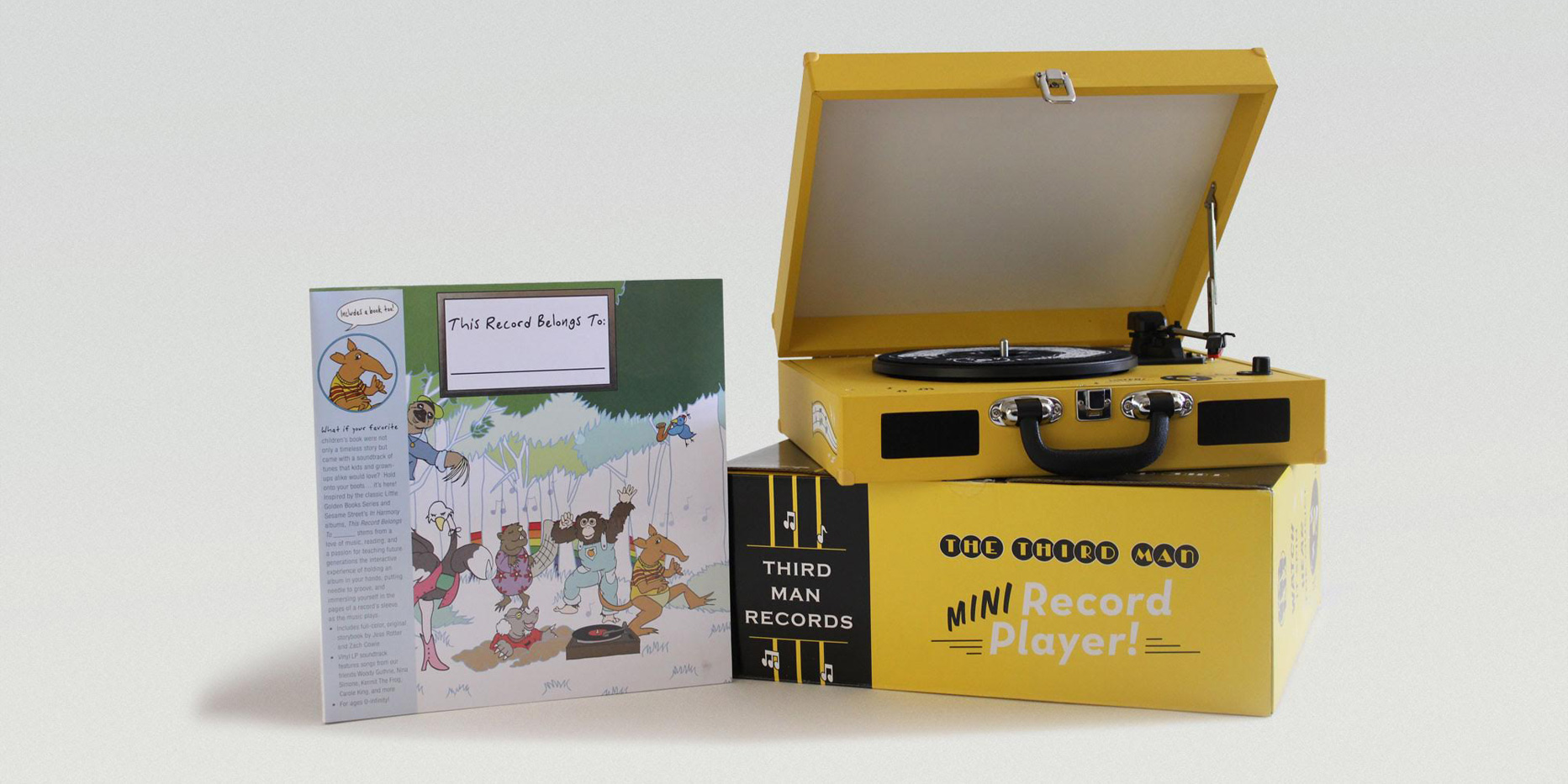
This Record Belongs To __________
What’s the relationship between taste and parenting? Should music obsessives with children try and turn their kids onto cool music, or should they accept that kids enjoy Raffi and Barney and the Wiggles and just endure it? This Record Belongs To __________ is a children’s music compilation issued by the perennially hip reissue imprint Light in the Attic, so you know where it stands. Put out as part of a package that includes a portable turntable manufactured by Jack White’s Third Man Records, the would-be starter kit is, befitting its source, a retro collection that will invoke different strains of nostalgia for listeners of at least three generations. Grandma and grandpa, who were adults in the 1960s and ’70, will appreciate playful kid-friendly tunes from Harry Nilsson, Van Dyke Parks, Carole King, Jerry Garcia, and Donavan. Young parents who grew up hunting down music obscurities will enjoy the gentle sounds of Vashti Bunyan, Nina Simone, and the much-sampled Pointer Sisters funk jam “Pinball Number Count”. And everyone who is or ever was a child loves Kermit the Frog singing “The Rainbow Connection”. —Mark Richardson

Grace Jones’ I’ll Never Write My Memoirs
Grace Jones' returned to the spotlight this year in stellar fashion: The 67-year-old’s topless, hula-hooping Afropunk performances gave you all you needed to know about this contentious and undeniably fabulous music and style icon. But for those who simply can't get enough of Jones' no-holds-barred candor, there's I'll Never Write My Memoirs, the recent autobiography of her eccentric life as told to Paul Morley. Memoirs highlights Jones' outlandish, well-known moments as well as more eye-opening, private segments of her life, such as a stifled childhood in Jamaica and her intense romances with the likes of Dolph Lundgren and Jean-Paul Goude. There's even a tour rider attached to the end, a hilarious coup de grâce to readers after nearly 400 pages of Jonesian revelations. ("Grace does her own shucking," it says regarding a request for two dozen oysters.) I'll Never Write My Memoirs is an excellent reminder that Jones' lust for life is something we should all be aspiring to embody—half-naked hula-hooping included. —Eric Torres
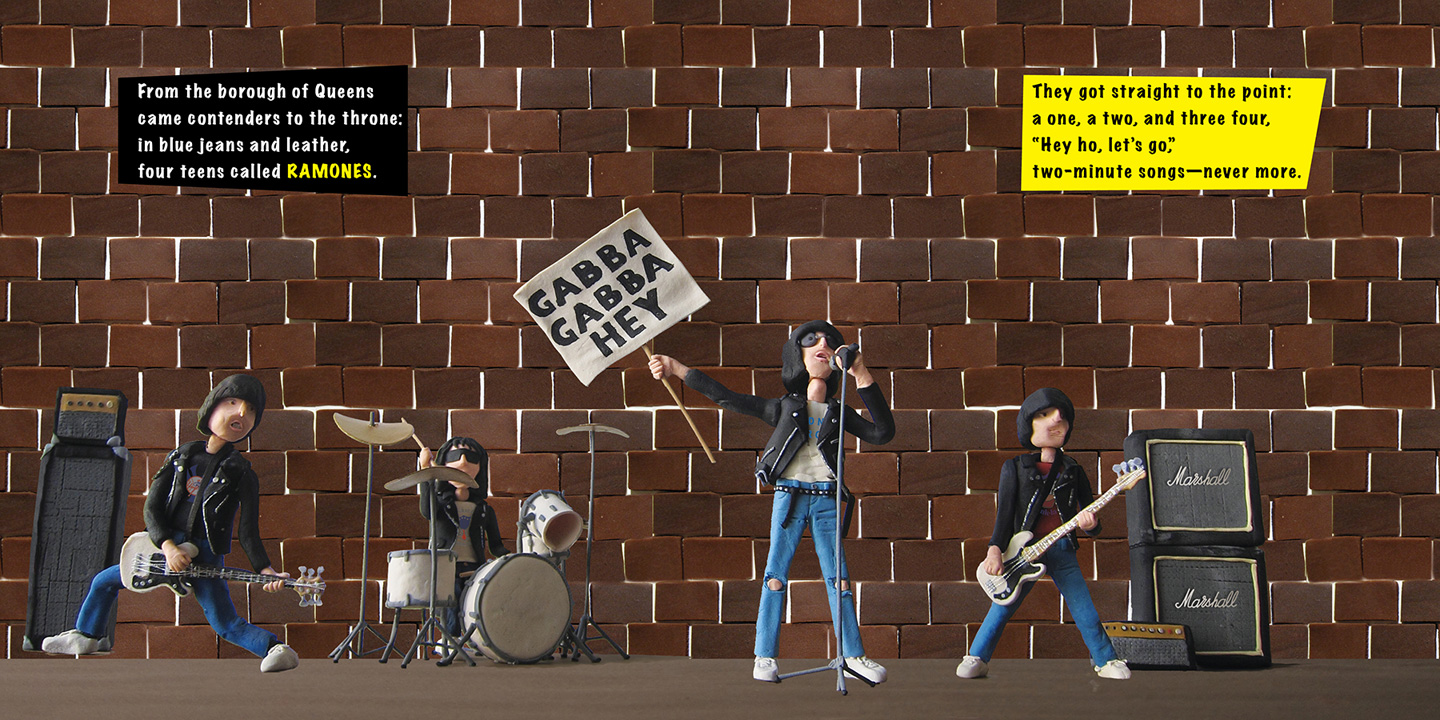
What Is Punk?
Birthed in the mid-’70s, punk rock is currently in the throes of middle age. So it makes sense that there are suddenly a bunch of kids books focused on the genre, though most of them are pretty terrible. But that is not the case with the breezy, playful What Is Punk?, which features Eric Morse’s fun (and historically accurate!) rhyming couplets about the general tenets of punk alongside colorful clay figures of Television, the Clash, the Stooges, Sex Pistols, Black Flag, Bad Brains, X-Ray Spex, Slits, and others by Anny Yi. When I read this book to my own children, they asked me to sing a song from each band—a good challenge in and of itself—which quickly lead to their obsession with the Misfits and the Ramones. One caveat: Come up with a good alternate answer for how the Circle Jerks got their name beforehand, because your kid will definitely ask. —Brandon Stosuy

Hip-Hop Pins
Hip-hop moves at an incredibly rapid pace that’s intrinsically connected to the Internet and its ruthless zeitgeist. In that spirit, Pintrill offers wearable rap status updates that gleam as bright as the ring on Rick Ross’ pinky. Naturally, the custom pin company updates its catalog pretty frequently; they have five separate pins dedicated to Kanye’s various shoes, as well as a few selections geared for Mr. West’s upcoming presidential campaign. Advanced followers can throw some subtle shade with the Drake-repping Charged Up pin. Unfortunately, these pins sell out fast (reflecting the Internet's no-looking-back ethos), so the odds of getting that Pharrell hat one are slim. But these tiny avatars are more permanent than any retweet. —Matthew Strauss
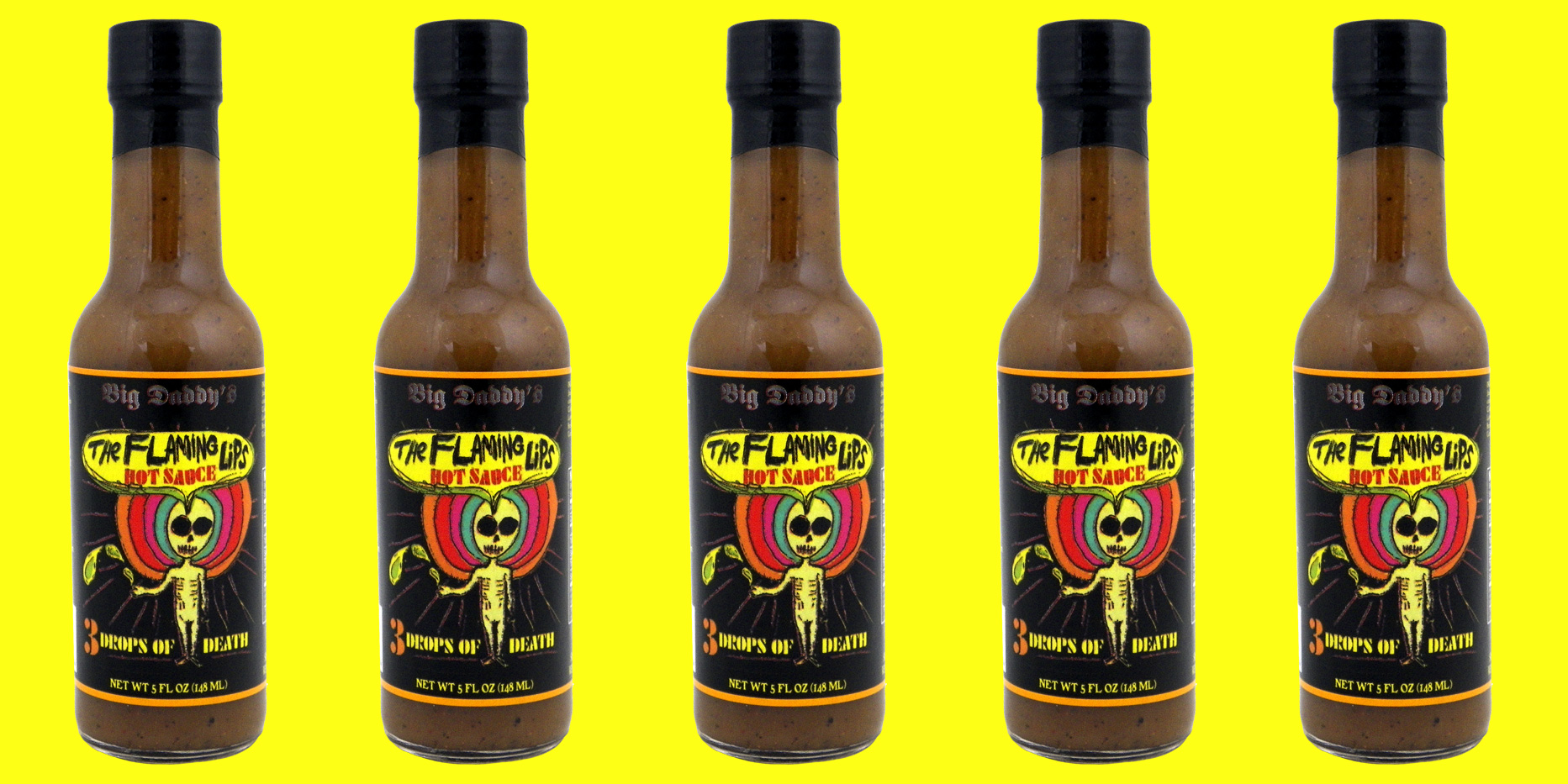
Big Daddy’s Flaming Lips Hot Sauce
From Bad Brains to Patti Labelle to Lynyrd Skynyrd, musician-branded hot sauce is a well-known (and well-stocked) industry. Same goes for the Flaming Lips’ penchant for oddball merchandise (gummy skulls, a fetus Christmas ornament). So it only makes sense for such spicy synergy to align and yield a bottle of Flaming Lips hot sauce. It says “3 Drops of Death” on the container, and the sauce comes wrapped in a label featuring psychedelic alien artwork by Lips frontman Wayne Coyne. —Brandon Stosuy

The Weeknd Custom Vaporizer
If anyone deserves their own vanity vaporizer, it’s the Weeknd. He’s pop’s reigning prince of darkness—someone whose hits are defined by sex, drugs, and dulled pain. “When I’m fucked up, that’s the real me,” Abel Tesfaye sings on “The Hills”, and if you’re ready to join him in such a quest for realness, Tesfaye’s tour sponsors PAX have you covered. Stare into the engraved XO on the base of the vaporizer, hit the power button, and listen as the device plays—yes—“The Hills”. If you’re concerned that Tesfaye’s voice will boom out of the handheld cylinder while you’re attempting to be discreet, fear not: It’s a MIDI version of the song’s chorus, and it plays very quietly. It’s like a first-generation Game Boy version of the hit single—primitive, stiff, robotic, and just a little silly. For the full Weeknd experience, it might be best if you run Beauty Behind the Madness through some bigger speakers while you indulge. —Evan Minsker
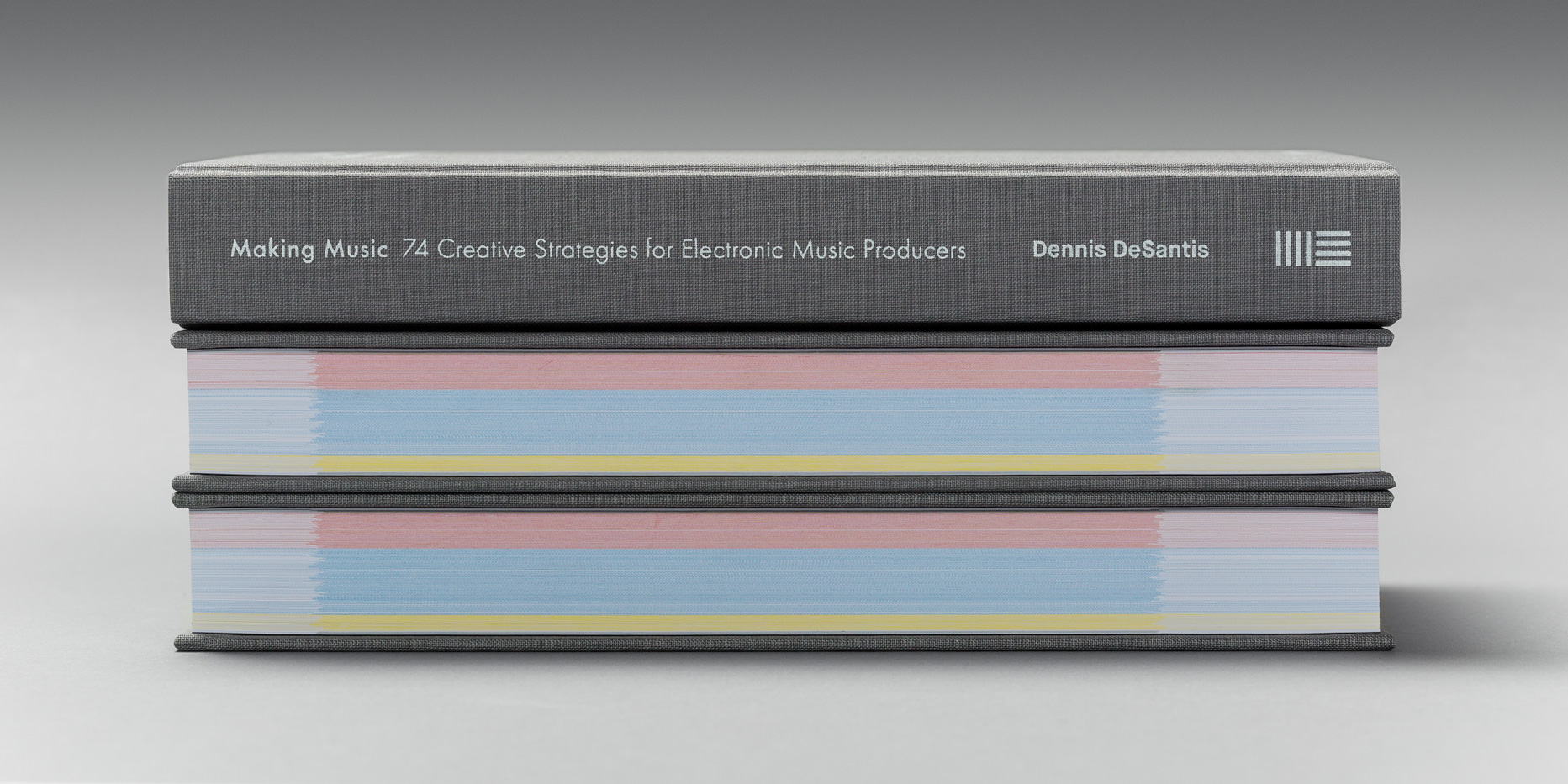
Making Music: Creative Strategies for Electronic Music Producers
"For many artists, nothing inspires more existential terror than actually making art," writes Dennis DeSantis in the introduction to this handsome hardcover book. (Perhaps that's why so many musicians take to Twitter.) Published earlier this year by the Berlin software company Ableton, Making Music offers a far more productive procrastination method, and not just because it won't get you blocked, mocked, or banned. Organized into three sections—beginning, developing, and finishing a song—the book lays out 74 different creative problems common to anyone who makes music using a computer, from basic issues like knowing which tempo to choose to far more knotty, even existential, dilemmas: "You're happy with the music you make, and other people are as well. But deep down, you don't truly believe it's original, and you feel that you should be working harder to find a sound that is uniquely your own." Each problem is paired with a suggested solution that can be philosophical or practical. Like a slightly more genre-specific version of Brian Eno and Peter Schmidt's Oblique Strategies, these creative prompts are meant to facilitate a fresh approach to music-making by wrenching people out of ingrained habits. And while DeSantis' rhetorical style is friendly and reassuring when it needs to be, he's not afraid to bust out the tough love. "The reality is that there are no shortcuts," he writes. "As painful as it is, every project, for everyone, requires real work." —Philip Sherburne

Lana Del Rey Paper Dolls
It may not be fashionable to love Lana Del Rey, but dressing her is another story. Crafted from high-quality paper and colored through pencils, inks, and digital tools, artist Iván García’s Lana Del Rey paperdoll kit comes equipped with all the classic outfits we’ve come to associate with the somber singer, including the Red Chucks, flower crown, and flowing white gown featured in her “Born to Die” video. It’s the perfect educational tool for getting youngsters into the singer’s cigarette-smoking, passionately despondent, late-capitalist American aesthetic. —Zoe Camp
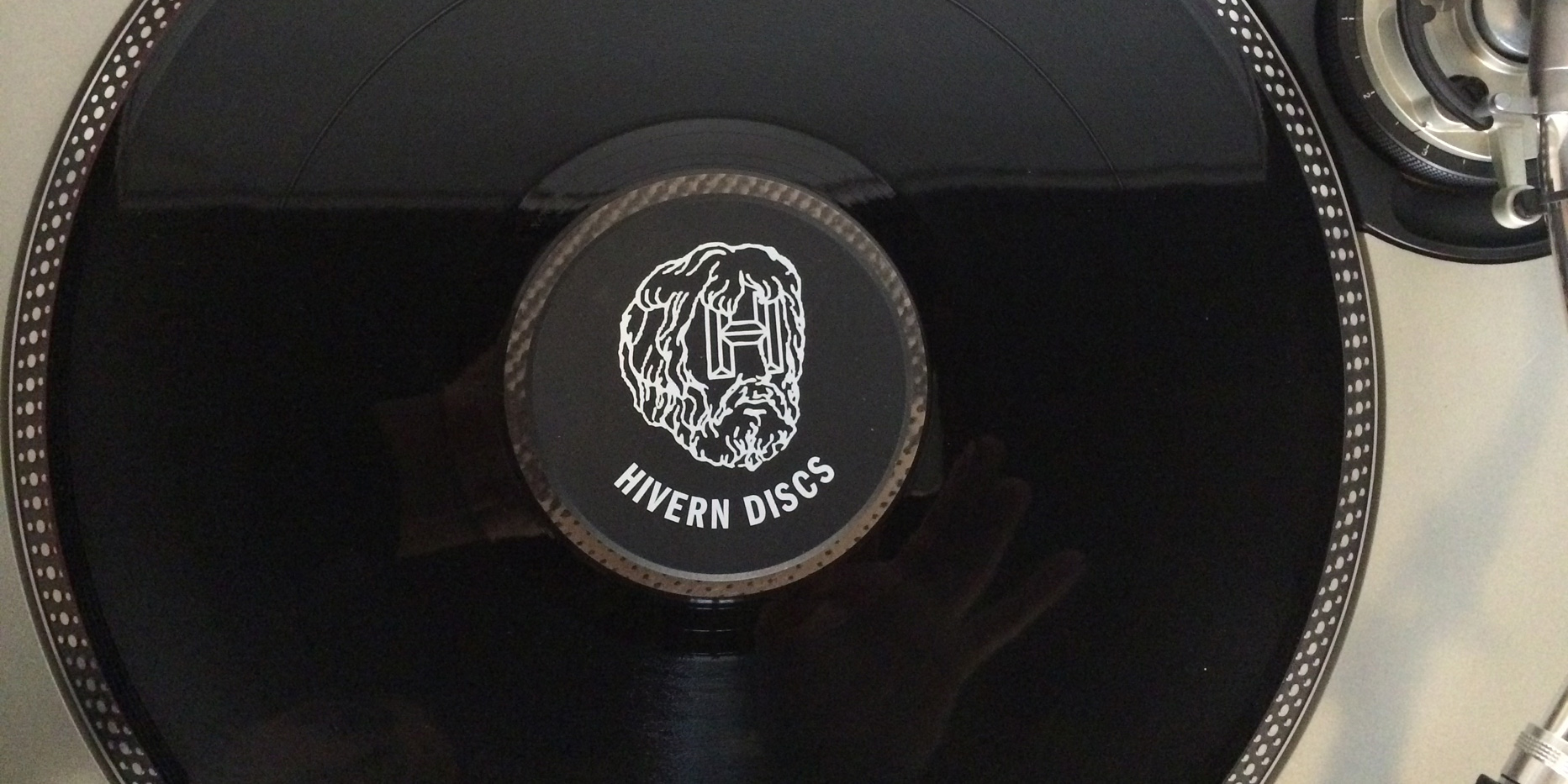
Hivern Discs Vinyl Stabilizer
For all of its upsides, there's no disputing that vinyl is a fragile medium prone to wear and warping. And stalwart DJs who persist in playing wax in nightclubs can attest that the problems don't end there; poorly serviced turntables and feedback from bass vibrations can make the whole enterprise suddenly seem not worth the lower-back pain and extra luggage fees. It's a situation that Barcelona DJ and producer John Talabot knows all too well, especially given his fondness for vintage disco—and that's where this handy little gizmo comes in.
The vinyl stabilizer applies more than a pound of pressure to your record, tamping down mild warping, correcting for unwanted bass resonance, and delivering improved fidelity, whether at home or in the club. It's decorated with the stylish logo of Talabot's Hivern Discs label, the better to display your great taste in modern house music. And if you're worried about pesky trainspotters jacking your steez, it's also a great way to cover your records' center stickers and keep the booth-peepers scratching their heads. —Philip Sherburne
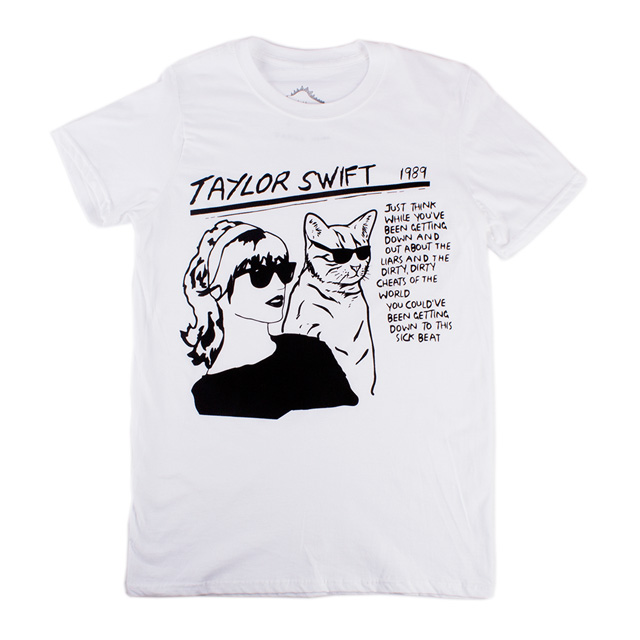
Taylor Swift/Sonic Youth T-Shirt
Cultural appropriation: Sometimes, it ain’t bad! A purist might balk at this reinterpretation of Raymond Pettibon’s parricide-celebrating cover art for Sonic Youth’s Goo; Taylor Swift’s attempt at being cool has always seemed so thirsty, whereas Sonic Youth oozed New York hip with every effortless motion. (They would never write a song called “Welcome to New York”.) But hey, thumbing your nose at punk orthodoxy is always a fun time—just make sure you know all the words to “Shake It Off” when you throw this thing on. No false Swifties allowed! —Jeremy Gordon
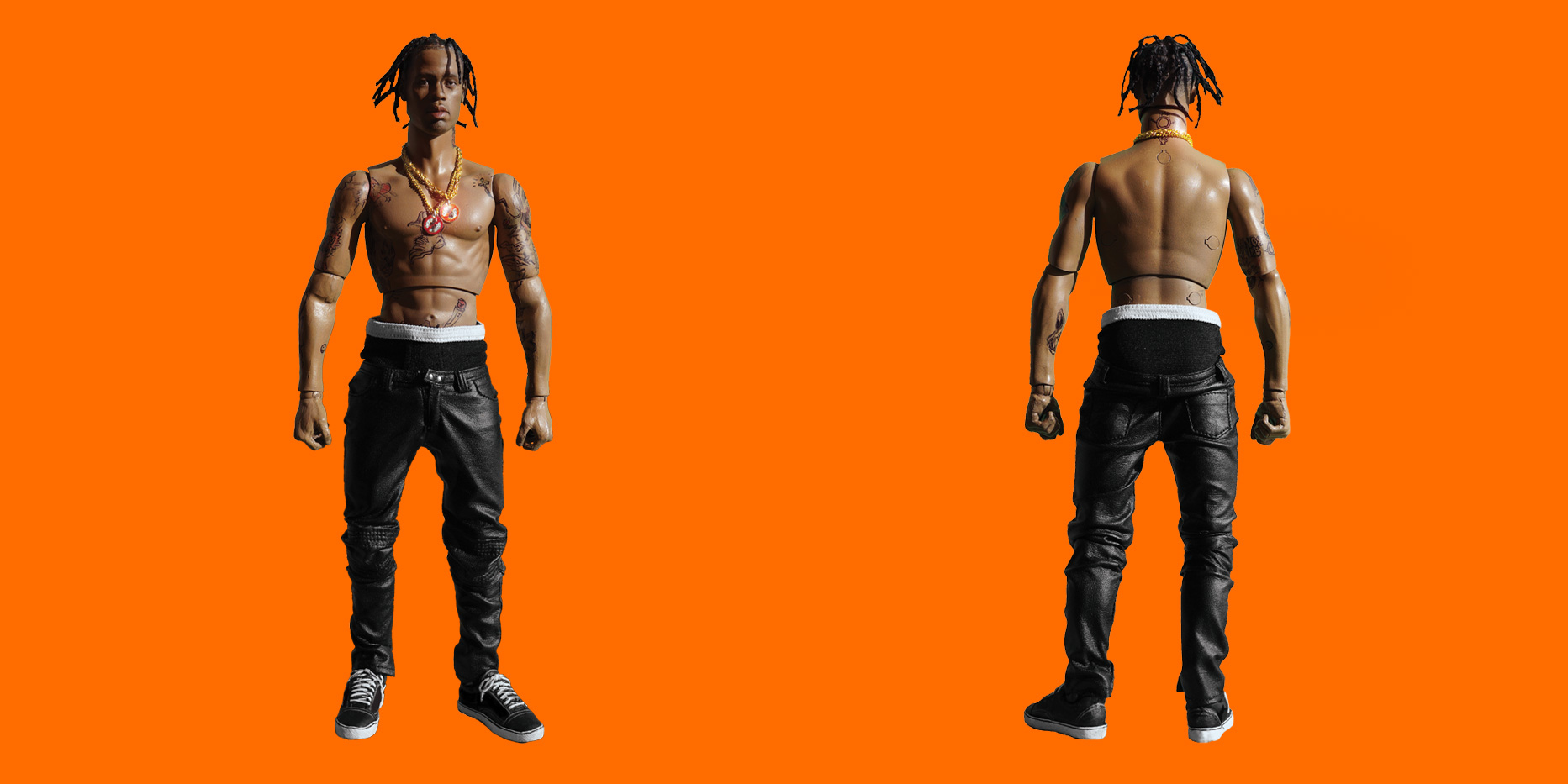
Travis Scott Action Figure
Look closely at the cover of Travis Scott’s debut album, Rodeo, and you’ll realize that’s not the real-life Houston rapper but rather a very accurate Travis Scott action figure. And now you can buy that hunk of plastic—though, at $150, it’s a little bit pricier than the He-Men and Teenage Mutant Ninja Turtles of yore. Maybe the figurine is a commentary on how Scott is manipulated by the public as an artist: You can pose him, but can he truly ever… pose himself? Maybe we’re just thinking about this too much. —Matthew Strauss

Music Is a “Natural High” T-Shirt
The radical and true slogan emblazoned across these shirts appears alongside a graphic of a human arm handcuffed to the neck of an electric guitar. The design comes by way of noise musician Heath Moerland (who operates the underground label Fag Tapes) and we discovered the shirts from the inimitable M’Lady’s Records, which has instated a policy offering a discount to all female customers to compensate for the wage gap in the U.S. Per M’Lady’s: “MUSIC IS A ‘NATURAL HIGH’—GET INVOLVED.” —Jenn Pelly

The Prophet from Silicon Valley: The Complete Story of Sequential Circuits
Dave Smith Instruments is one of the most beloved synthesizer companies in operation today, and Smith's previous company, Sequential Circuits, was one of the most beloved synthesizer companies of all-time, even though it only operated for 13 years. Its flagship instrument, the Prophet-5, introduced in 1978, was one of the first polyphonic synthesizers and one of the first analog synths to include patch memory; today, a vintage model might set you back $5,000 or more on eBay.
David Abernethy's The Prophet from Silicon Valley tells the story of Sequential Circuits' groundbreaking but ultimately star-crossed run, from Smith's time as a Lockheed Martin engineer—he built his first contraption, a step sequencer for his Minimoog, on a workbench in the closet of his one-bedroom apartment in Cupertino—to the company's eventual bankruptcy and fire sale to Yamaha in 1987. Drawing from interviews with Smith and other ex-Sequential employees, plus fellow inventor/entrepreneurs Roger Linn and Tom Oberheim, and a host of musicians including Talking Heads' Jerry Harrison, the Cure's Roger O'Donnell, and Terry Riley, the book brings to life not just Smith's pioneering company, but a pivotal era in electronic music—and an oft-overlooked side of Silicon Valley history to boot. It's as close as you'll ever get to the Sequential Circuits shop floor without a time machine and a laminated pass. —Philip Sherburne
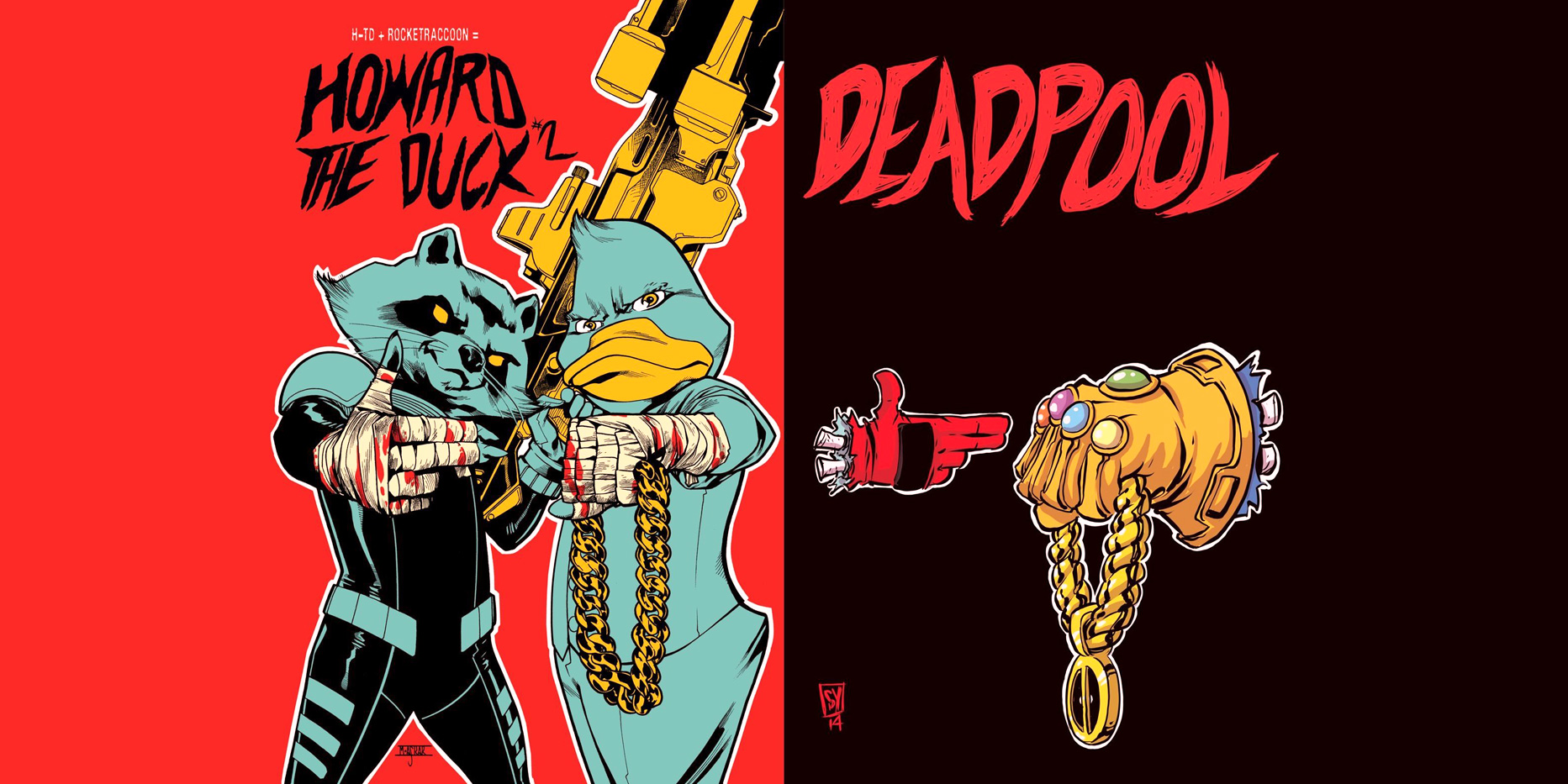
Run the Jewels Comic Book Covers
Squint your eyes and you can see a lot of parallels between rappers and superheroes: They’re both huge personas who use their special abilities (punchlines, X-ray vision) to combat injustice in a cruel world. “Comics are the literature of outcasts, of pariahs, of Jews, of gays, of blacks,” cultural critic Ta-Nehisi Coates once wrote. “It's really no mistake that we saw ourselves in Doom, Magneto, or Rogue.” These Run the Jewels-inspired alternate covers for Marvel comic books pay tribute to that connection in a delightfully stylized way. —Jeremy Gordon

Kanye 2020 Hat
From the moment he uttered those nine fateful words—“I have decided in 2020 to run for president”—onstage at this year’s VMAs, the world has been feverishly anticipating the start of Kanye West's run for the White House. Yeezy may not have hired any staffers or proposed any policy just yet, but political revolution doesn’t happen overnight: So what better way to herald the political event of the century than by showing your support with a bright pastel baseball cap? It’s just as attention-grabbing and comfy as Donald Trump’s infamous “Make America Great Again” hat, except without all those ugly racist connotations. Join the movement. Wear the hat. —Zoe Camp

Amy DVD
Amy isn't exactly cheery holiday fare, yet director Asif Kapadia does bring some hope to his documentary about the late British soul singer. By eschewing on-camera talking heads in favor of voiceovers and collaged footage, he creates a living portrait of Amy Winehouse in all her glory, highlighting her supernatural talent, comprehensive jazz knowledge, and the brilliant wit that got buried beneath her addiction and ensuing callous media jibes. Kapadia's light directorial touch lets the vultures in Winehouse's life indict themselves, but he also exploits the well of paparazzi-shot footage that contributed to Winehouse's destruction, which makes for conflicted viewing—our appetite for these scenes surely implicates us in her death, too. Nevertheless, the film offers a corrective to the dismal image of Winehouse perpetuated by the media towards the end of her life, and to any lingering perceptions of her as an MOR artist. I had only previously heard her albums when my dad hammered them in the car, but after seeing Amy, I immediately bought them both. — Laura Snapes

Gay Guerrilla: Julius Eastman and His Music
Though much of Julius Eastman's minimalist work blending elements of classical, pop, and disco in the '70s and '80s hasn't received the same kind of attention as similarly-minded fellow New Yorker Arthur Russell, the new essay collection Gay Guerrilla stands to correct such an oversight. Presenting a frame of reference for his life, music, and the cultural climate in which he tried to earn recognition for his racially- and sexually-charged work, Gay Guerrilla sheds light on an artist whose incendiary art still speaks loudly to a contemporary culture grappling with its own sexual and civil rights issues. The book also describes some of the more sensational moments in Eastman's life, such as an infamous 1975 performance in which he undressed his boyfriend on stage during an interpretation of John Cage's Song Books that subsequently caused Cage to shout, “I’m tired of people who think that they could do whatever they want with my music!” Eastman's ability to rattle one of the most eminent composers of his time is as good an indicator as any that Gay Guerrilla is not to be missed. —Eric Torres

Good Night and Good Riddance: How Thirty-Five Years of John Peel Helped to Shape Modern Life
One of the best parts of being a music fan is piecing together wider social histories as you learn about the records you love. David Cavanagh's latest book is an outstanding attempt to unspool 35 years of British history in parallel to John Peel's broadcasting legacy, first on pirate radio, and then on the BBC. Cavanagh sifts through 265 of Peel's key shows and contextualizes them against the news of the day, illustrating the work of a broadcaster who influenced British culture while recognizing the importance of crafting his playlists to complement—and undermine—the national dialogue. At 640 pages long, it's a bit of a doorstop, and the links sometime get tenuous, but Good Night and Good Riddance is one of the most entertaining blitzes through late 20th century British history around—and it definitely has the best soundtrack. —Laura Snapes

Celebrity Goddess Tarot Cards
Apart from the fact that visual artist Faye Orlove's Celebrity Goddess Tarot Deck features pictures of holy deities such as Courtney Love, Beyoncé, Nicki Minaj, Patti Smith, and Kathleen Hanna, a big part of the appeal has to do with which artist is matched with which card. According to Orlove, Miley Cyrus symbolizes "death," Taylor Swift is "the sun," and Bjork is "the world." These 22 major arcana tarot cards are essential for savvy pop mystics everywhere. —Molly Beauchemin

The Periodic Table of Hip Hop
Given the wealth of in-depth books charting the rise of hip-hop, you might hesitate to reach for Neil Kulkarni’s fairly slender effort, the latest in UK publisher Ebury Press’ Periodic Table series. Yet for a book aimed at relative newcomers, it’s admirably iconoclastic. Kulkarni, a famously prickly firebrand of the ’90s UK music press, rejects hip-hop’s codified narratives—the elevation of "white folk"-approved proto-rap like the Last Poets over revolutionary collective Watts Prophets, or the "cycle of media misreading and misportrayal of b-boying"—and instead charts a multitude of new paths between the Dozens and drill, George Clinton through Kendrick Lamar. The tabulated format ought to grate—each artist gets about a page, so Kulkarni has little room to stretch—but the book does a fine job swirling musical, social, and political histories into one fluid timeline. —Jazz Monroe

My Bloody Valentine Loveless Duvet Cover
With its warm waves of feedback and woozy vocals, My Bloody Valentine’s Loveless is basically the aural equivalent of a heavy fuchsia quilt. And with this MBV-inspired duvet cover, you can bring that snuggly sound to life in your own home while impressing your guests (and potential bedmates) with your excellent taste in shoegaze. The duvet’s creator, Nicealb, offers a variety of music-related bedding, so if you’d prefer to snuggle beneath the Shins or Sonic Youth, that’s your prerogative. —Zoe Camp